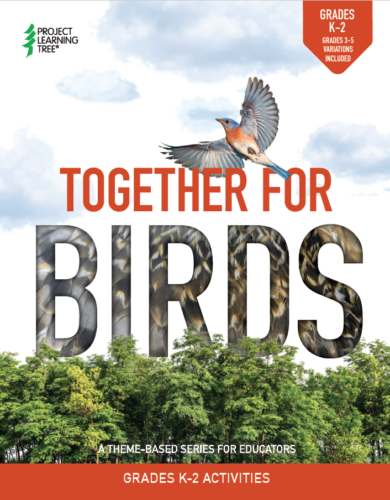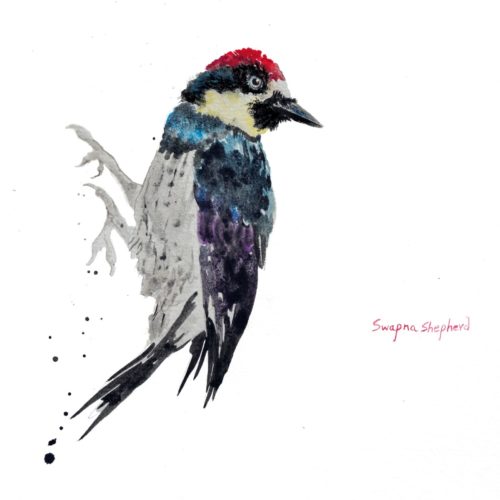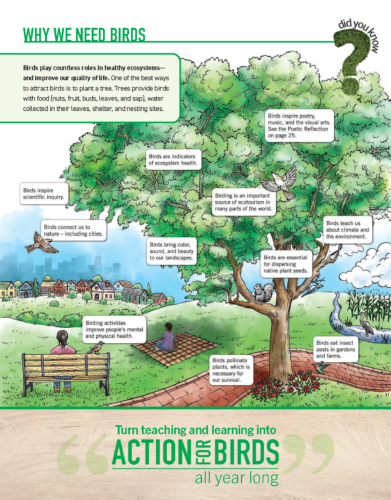May 11, 2023
 Together for Birds
Together for Birds
Birds are a wonderful introduction to the natural world and happen to be just outside your door! Whether in the city or a forest, a variety of birds are usually within easy eyeshot or earshot.
PLT and American Bird Conservancy (ABC) collaborated to develop a special new digital activity collection–Together for Birds. The activities are designed for educators to use with students in grades K-2, with variations for grades 3-5. The collection is filled with enhanced bird-specific content such as new enrichment experiences, recommended reading, forest facts, accompanying posters, and charts.
Birds of a Feather Flock Together
This saying seems fitting as we prepare to celebrate World Migratory Bird Day on May 13, 2023. This special day originated to bring awareness of the threats that migratory birds face, their ecological importance, and why it’s so critical to help conserve migratory birds and their habitats.
According to ABC, “Hundreds of bird species flood back and forth between northern breeding grounds and southern wintering areas twice yearly, each a unique circuit of landscape, habitats, and threats.”
Why Birds Migrate
Birds migrate for two primary reasons–food and nesting. Birds that nest here in the Northern Hemisphere migrate north in the spring because of ample food supply and places to call home. While some birds do not migrate at all, those that do travel varied distances ranging from simply moving down a mountain to a lower elevation to thousands of miles. What is even more incredible is that while the exact path birds travel may differ slightly each year due to weather conditions, food availability, and other reasons, a bird’s inner compass, so to speak, always gets them back home.
In North America, there are four “avian superhighways”–the Atlantic, Mississippi, Central, and Pacific Flyways. Check out this article from ABC to learn more about the flight patterns of bird species near you!
Home Tweet Home
From wetlands to forests, birds have a host of habitats they call home. Some birds build their nests high up in trees, while others create burrows in sand. You might find a bird’s nest delicately floating in a pond and another attached to a freeway overpass. Birds build nests from various materials, including sticks, grass, roots, lichen, bark, feathers, and even mud.
For a fun activity to do with young learners, do the Tree Textures activity from Trees & Me. Set up a discovery table with various materials, like shredded paper, twigs, and moss, and encourage children to build their own nest.
Trees & Birds–A Symbiotic Relationship
Trees are more than just a place birds call home. Birds often find their food, like insects and worms, flying around trees or in the rich soil surrounding a tree and its roots. But it’s not just birds that benefit from trees. It goes the other way around! Birds are essential for dispersing seeds–they contribute to growing more trees. They also help control insect populations, eating pests that can harm trees and plants. These are just some of the many ways trees and birds thrive from one another.

Activities to Celebrate Birds
Here are some fun ways to celebrate World Migratory Bird Day!
- World Migratory Bird Day – Global Events Map: Check out events happening near you with this easy-to-use map. From guided nature hikes hosted by birders to interactive exhibits, there is something for everyone!
- Download the Together for Birds activity collection: Take learners on a journey outdoors to discover the birds and other organisms living in, on, and around trees; how coloration helps animals survive; and signs of animals in different habitats.
- Introduce kids to urban birdwatching: Head outdoors and have your learners to use their bird-spotting eyes and ears (or binoculars!) to observe birds. Bring paper and some colored pencils with you and get creative–encourage students to draw the birds they see in their nature journals.
- Name that bird: With profiles of over 400 bird species, check out American Bird Conservancy’s Bird Library. Instead of having students write a book report, have them write a bird report. Encourage them to learn more about a bird’s habitat, its population, what it eats, where it lives, and even the sounds it makes–whether to attract a mate or to warn others of nearby danger.
Get Your Copy of Together for Birds – New Activity Collection!
PLT partnered with American Bird Conservancy to create a new bird-themed digital activity collection, Together for Birds. Thanks to generous funding from ABC, this collection is available for free until December 31, 2023.



